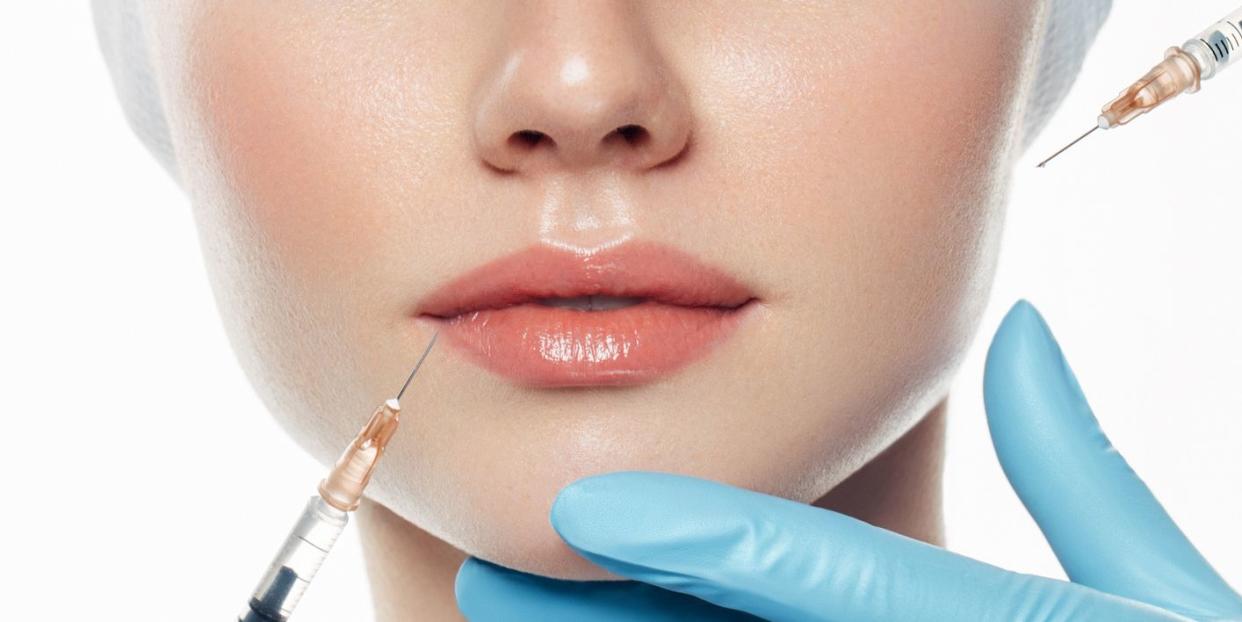How botox injections work

Bothered by wrinkles and curious about botox? Used as a cosmetic procedure to relax the muscles in your face to smooth out fine lines and wrinkles, Botox injections are now routinely available on the high street. But is the procedure safe, what are the side-effects and does it actually work?
As a cosmetic treatment, Botox is relatively new, having only been available since 1990 (although used medically for many years before this) so a lot of people are, understandably, nervous about going for this treatment at a high street clinic. We chat to two Botox doctors about what’s involved and whether it really is worth the fuss to turn that frown upside down.
What is a Botox injection?
Botox is, in fact, a toxin. Botox is the brand name for Botulinum toxin type A but it’s not going to make you poorly. Aesthetic doctor Dr Yusra, explains, ‘Botulinum toxin type A is a neurotoxin which stops the release of neurotransmitters and therefore stops the nerves from sending a signal to a muscle to contract, and therefore the overlying skin to wrinkle.’
In cosmetics, Botox is mostly used on the forehead. ‘It is used in aesthetic treatments to stop movement of the frown muscles, the so-called 11-lines between the brows, horizontal lines on the forehead and around the eyes,' explains facial aesthetics doctor Dr MJ Rowland-Warmann. 'It can be used in other areas of the face and body too but the upper face is most common.’
The treatment is relatively quick, involving injecting small drops of the product into the muscles that are being treated. Dr Rowland-Warmann confirms it is ‘a series of very small injections in a process that is quick and relatively painless. Results occur after 7-14 days.’

How long does botox last?
With cosmetic procedures such as botox, once is usually not enough. Getting the treatment as a one-off works perfectly well, but it’s not forever, as Dr Yusra explains, ‘After approximately 12 weeks, the muscle movement returns as the nerve sprouts new nerve endings and new signals are again released to the muscle to contract. Patients therefore need to repeat the treatment usually every 3-4 months.’
You also might find that even that one treatment needs topping up shortly after your session, ‘Some patients may require a top-up to enhance the result, which is usually at the two week mark post treatment if need.’
What happens at the Botox clinic?
While the procedure is now readily available on the high street and even Superdrug has started offering the service, if you go to a reputable clinic for Botox treatment, they will want to conduct a consultation first and decide the best course of action for you.
In the UK, the cost of Botox injections can vary from £100-£350 per treatment, depending on the clinic and the area being treated.
‘Botox and all other toxins are prescription-only medicines,' stresses Dr Rowland-Warmann. 'Botox or any toxin treatment is elective, and so the option of not having treatment should always be at the forefront as the procedure does involve risks.’
Botox risks and side-effects
Is it possible to botch Botox? ‘Indeed it is,’ warns Dr Yusra, ‘The so called “Spock” look of high raised arched eyebrows gave Botox a bad name and scared many off having the treatment in case they were left with a long lasting constant surprised look,'
'If the forehead is over injected or injected too low, you can end up with a low heavy brow making you look angry. Ensure the person injecting you understands the result you want and injects with care and experience,' she adds.
And it doesn’t stop there, ‘I have seen complications varying from bruising to dropped brows, which is a so-called ptosis. The latter is quite serious, and results in an uneven position of the brow which can last several months and is psychologically debilitating and aesthetically unpleasant for the patient,’ explains Dr Rowland-Warmann. Compelling reasons to make absolutely certain you are using a reputable clinic with an experienced medical practitioner.
Does botox hurt?
Both our experts assure us that Botox injections involve minimal pain. ‘A small pin prick is usually all a patient will feel for a few seconds to minutes,’ says Dr Yusra.
‘The process is quick and, in the hands of an experienced injector, can be painless,' agrees Dr Rowland-Warmann. 'Some patients perceive minimal discomfort but this is only during the procedure and they can go about their day afterwards.’
Botox alternatives
To Botox or not to Botox? If you’re still not sure whether the procedure is for you, there are other options you can look into, which are all popular treatments for reducing the appearance of fine lines wrinkles:
• Microneedling
Tiny little needles puncturing the skin causing microtrauma and in effect causing new college information and skin remodelling and improvements.
• Intracel
A new FDA approved treatment which combines microneedling with radio-frequency simultaneously, resulting in heat distribution to the skin to increase collagen formation and significantly resurface the skin.
• High intensity focused ultrasound
Used to rejuvenate the skin and tighten the face and can give you a more long lasting effect and a subtle natural lift to the eyebrows by tightening the muscle there that can sag with age.
Botox safety advice
If you do decide to go under the needle, both our experts cannot stress enough the importance of using a qualified, experienced medical practitioner for your Botox treatment. Opt for a medical practitioner who is listed on a register to show they have the relevant training, skill and insurance. Registers include:
As a parting tip, Dr Rowland-Warmann adds, ‘You can also improve your outcomes and skin appearance by using good sunscreen and high quality skincare, both of which may act to prolong the duration of your botox treatment.
Last updated: 05-02-2020
You Might Also Like

